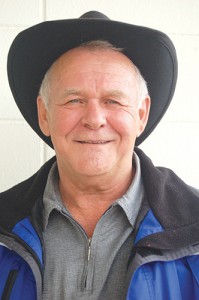Cannabis Oil Alternative Cancer Treatment: Your Complete Guide
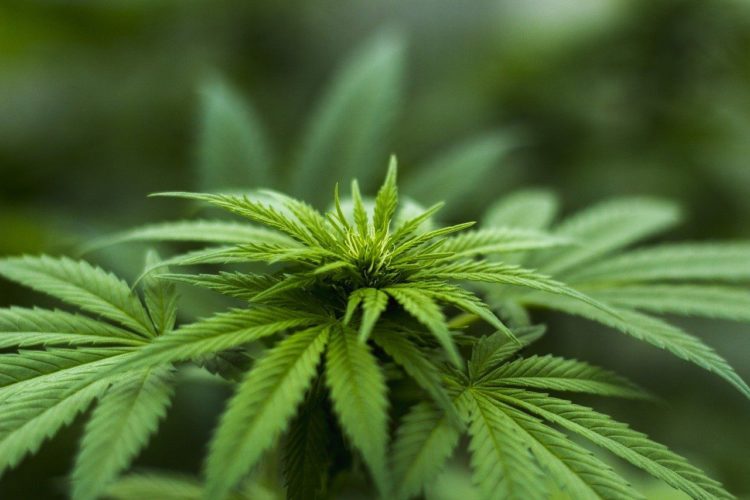
This article will show you virtually everything you need to know about cannabis medicine – including the story of Rick Simpson, 8 people who have cured themselves of cancer, 10 medical studies on cannabis vs cancer, and most importantly, the exciting future of cannabis medicine.
Cannabis is a beautiful and aromatic flowering plant that includes three different species: Cannabis sativa, Cannabis indica and Cannabis ruderalis. These species are believed to originate in Central and South Asia millions of years ago, and they can be found today all around the world.
In time, Cannabis will be known for what it once was, the most medicinal, useful plant species on planet earth. Not only does it make an incredibly effective medicine, the dense cellulose from the plant, oils, and fibres can be used for over 50,000 different industrial products in virtually every industry in the world today.
Between the use of cannabis as medicine, and the thousands of other uses for the hemp plant in our everyday lives, as time passes this plant will one again be integrated back into our lives, until we are once again living in symbiotic harmony with it.
In putting this article together, it was our goal at EndAllDisease.com to summarize virtually everything to date that we know about cannabis medicine, to make it as easy as possible for you to explore the evidence that reveals its potential to cure a variety of diseases, including cancer, and to learn what the exciting future of cannabis medicine has in store for us.
TABLE OF CONTENTS
The Rick Simpson Story
In a story that provides valuable insight into the effectiveness of cannabis oil medicine, as well as the strange politics surrounding the use of cannabis oil to cure cancer, Rick Simpson was a man who discovered a cure for cancer and shared it with as many people as he could… free of charge.
In 1975, a man living in Nova Scotia by the name of Rick Simpson heard a report on the radio, which described the use of THC, found in cannabis, as a cure for cancer. Time passed and Rick never heard anything more on the subject, so he, like many people, assumed it wasn’t true. Then everything changed for him in 1997, when he suffered a serious head-injury at work.
Rick’s doctor prescribed him numerous pharmaceutical drugs, all of which didn’t help his condition, and had horrible side effects. Fed up with the lack of proper care he was receiving from his doctor, Rick Simpson watched a television program called Reefer Madness 2, in which David Suzuki interviewed a number of people who had been treating a variety of serious diseases and conditions by smoking medical cannabis.
Impressed with what he had discovered, Rick bought some cannabis (or hemp), and began smoking it. He soon discovered that cannabis oil is even more medicinal than smoked cannabis, and that many of the medicinal properties are destroyed from the combustion process. He then began producing his own hemp oil, a thick, dark, concentrated oil of condensed THC, and ingesting it as medicine instead of prescription drugs. The oil worked wonders for him!
In 2002, doctors examined 3 areas of skin on Rick’s body that were cancerous. The one cancerous patch of skin near his eye was removed surgically in January of 2003, at which point he surmised that a topical application of his cannabis oil will probably work better. Rick applied cannabis oil to his skin cancer with a couple of band-aids, and within a couple of days the skin cancer had been completely eliminated.
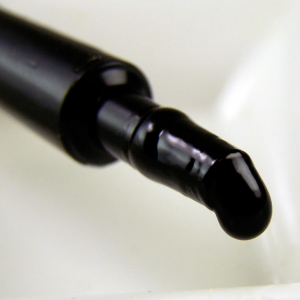 Excited about curing his own skin cancer with cannabis oil, he went to his doctor to tell him the good news, and Rick’s doctor refused to even talk to him about hemp medicine. Shocked and disappointed at the state of politics and economics surrounding the use of cannabis as medicine, Rick continued to produce hemp oil, and gave it (for free) to people with cancer and other serious diseases.
Excited about curing his own skin cancer with cannabis oil, he went to his doctor to tell him the good news, and Rick’s doctor refused to even talk to him about hemp medicine. Shocked and disappointed at the state of politics and economics surrounding the use of cannabis as medicine, Rick continued to produce hemp oil, and gave it (for free) to people with cancer and other serious diseases.
After helping thousands of people successfully treat a variety of diseases and conditions, including cancer, the RCMP raided 1600 cannabis plants, which he had been growing in his back yard to produce hemp oil medicine for people. To top things off, Rick Simpson contacted the Canadian Cancer Society about his hemp oil curing people’s cancer, and here is their response:
[quote align=”center” color=”#999999″]“The Society does not endorse or support medical products or dietary supplements. Thanks for the information. We wish you luck in your work.”
– The Canadian Cancer Society to Rick Simpson[/quote]
To avoid being arrested for the charges against him for curing people of cancer, Rick Simpson eventually fled the country, and moved to Amsterdam. In a recent interview with Rick Simpson, he mentioned that all the charges against him have been dropped and he is free to return to Canada at any time, but the battle with the Canadian legal system that he had to go through left such “a bitter taste in his mouth” that he will not be returning to live in Canada anytime soon.
Watch The Rick Simpson Story Documentary here.
8 People Who Cured Cancer with Cannabis Oil
Although the list of scientific research on cannabis is quite extensive, by far the most convincing evidence we have about its role in reversing cancer are the numerous testimonials of people who have used the medicine. Here is a brief look into an ever-growing list of people who have cured themselves of various types of cancer with cannabis oil:
- Tommy Chong was diagnosed with prostate cancer in June 2012, and after seeing The Rick Simpson Story documentary online, he decided to give Cannabis Oil medicine a try. Less than one year later from beginning his treatment, Tommy is feeling better and is completely cancer free.
- A 54-year-old woman, who was diagnosed with terminal stage-4 lung cancer, used cannabis oil internally to treat multiple cancerous tumors in her lungs and body. The doctor didn’t give her much hope, telling her she would be lucky to live 6-9 more months. Her daughter learned online about people curing cancer with cannabis, and her mother, surprised, began treatment with cannabis oil in February of 2014. After a follow-up CAT scan in September, not even 7 months later, the tumors in her lungs were completely gone.
- Dr. William Courtney’s youngest patient was an 8-month-old child, who had been diagnosed with an inoperable brain tumor. The child’s father began putting cannabis oil on the baby’s pacifier twice per day, and within two months there was a dramatic reduction in the size of the brain tumor. Treatment continued and Dr. Courtney says the baby was completely healed without any side effects.
- Kristina Marie was 24-years-old when she was diagnosed with a tumor in her brain by medical doctors. When they recommended chemotherapy for her cancer, she rejected it outright, and began treating herself with Rick Simpson’s Hemp Oil. After 3 MRI’s, her tumors have shrunk considerably.
- In September of 2012, a South African woman named Lindsay was diagnosed with colon cancer. During surgery to remove a rogue ovary, doctors noticed something wrong with her colon, but stitched her back up anyways. After a horror of surgeries and complications, including a punctured colon and bladder, the agony continued when doctors gave her Chemotherapy treatment. The chemotherapy didn’t work, so she stopped and opted for the use of Cannabis Oil instead. “I took all 6 syringes, which totalled 18 grams, in 46 days”. Normally people take 90 days to ingest this amount. On March 28th, 2012, while at the hospital to see the oncologist and surgeons, she underwent a range of tests and scans, and with four doctors present, they told her there’s no sign of any cancer in her body.
- Alysa Erwin was diagnosed with terminal brain cancer at age 14. “When the doctor called me to tell me Alysa had cancer, she said there wasn’t a good outcome. There was no success rate whatsoever,” said Alysa’s mother. After doctors declared her cancer inoperable with a zero-percent survival rate, Alysa’s father David wanted to try the Rick Simpson’s Hemp Oil he heard about online. Face with a choice between chemotherapy and cannabis oil, Alysa opted for the chemotherapy, but after just 5 days of agonizing therapy, she abandoned the chemotherapy and began treatment with cannabis oil. Just 30 minutes after her first half-of-a-grain-of-rice-sized dose of cannabis oil, Alysa’s pain vanished, she was eating, and laughing “like a regular teenager,” said her mother. After 3 months of cannabis oil, her tumor stopped growing, after 6 months they were shrinking, and Alysa is now completely cancer free, even after her doctors told her there was a zero percent change of survival.
- A 63-year-old man from England was diagnosed with liver cancer in 2009, and after a liver transplant, the cancer returned, and he began using hemp oil to treat himself after reading about it online. He said that within just 3 days his pain and symptoms had disappeared. Months later, “Mike went for a biopsy at the Royal Free Hospital in London, where doctors confirmed that the new cancerous cells in his liver had vanished.”
- Rick Simpson cured his own skin cancer using his home-made hemp oil.
_
The Medicine: Cannabinoids in Cannabis
Because of its psychoactivity, THC is the healing cannabinoid that most people are familiar with. In today’s modern strains of cannabis, though there are many, one thing they have in common is that they contain almost all THC, with little to no other cannbinoids.
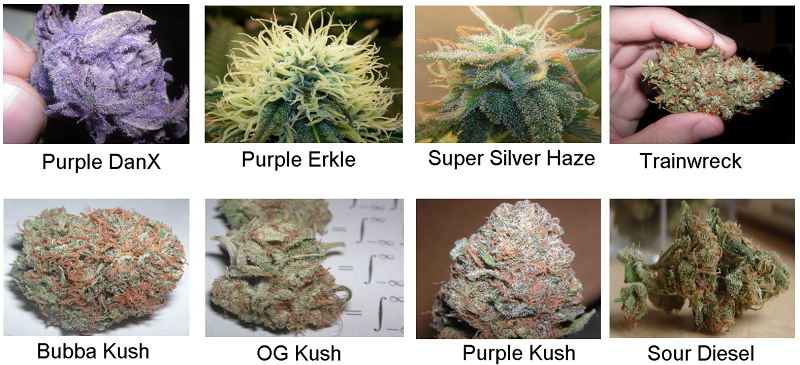
The primary difference in the myriad of varieties that exist today, is not the cannabinoid contents, but the type of essential oils produced by the plant, also called terpenes.
It wasn’t always this way. According to Michael Backes, author of Cannabis Pharmacy: The Practical Guide to Medical Marijuana, during the time before prohibition began, there were a whole host of cannabinoids in the cannabis plant, which all worked together, synergistically regulating and balancing the systems of the human body through its endocannabinoid system.
Then, just as the prohibition of alcohol resulted in a decline of the popularity of beer, and increased the popularity of hard liquor, after marijuana was prohibited, the banned psychoactive ingredient was once again emphasized, and growers have since embarked on a conquest to see who could create strains with the highest levels of THC. This of course, at the expense of all other cannabinoids present in original strains.
Whereas marijuana from the 1960’s was typically 2-3% THC, today it can be upwards of 30% THC. The following chart will show you the cannabinoids that used to exist in marijuana strains, and the cannabinoids in the majority of current strains.
Pre-Prohibition
|
Prohibition
|
|
THC CBD CBC CBG THCV CBDV CBCV CBGV |
THC |
_
According to researcher Michael Backes, heritage or original strains of the cannabis plant produce a balanced ecology of cannabinoids that synergize with the human body’s cannabinoid system, completely independent of THC and it’s psychoactive effects.
10 Medical Studies on Cannabis vs Cancer
Although the majority of what we have to learn about cannabis is ahead of us, there’s much we can learn from scientific studies which have already been conducted about the medicinal properties of Cannabis. For the purposes of this article, we will focus primarily on studies revealing its anti-cancer effects, since it’s one of the most common, and likely the most feared disease in our culture.
- In 2013, researchers from Italy and the UK investigated the effect of cannabis sativa extract with a high content of cannabidiol (CBD) on colon cancer cells. The study found that the high CBD cannabis sativa extract “inhibits colorectal cancer cell proliferation”. (PMID:24373545)
- In a study which began by outlining the hopelessness of conventional treatments to treat brain cancer, it was found that even in combination with a hazardous chemotherapy drug TMZ, “submaximal doses of CBD and THC produced a strong anti-tumoral action.”
- A study conducted by the California Pacific Medical Centre and published in The National Library of Medicine discovered that cannabidiol (CBD) significantly reduces tumor mass, and inhibits human breast cancer cell proliferation and invasion.
- In the journal Molecular Pharmacology, a study was published that found cannabinoids inhibited the growth of cancer cells, and induced apoptosis, meaning they caused the cancer cells to commit suicide.
- A 2011 study examined the use of CBD against breast tumors, and found that CBD “inhibits human breast cancer cell proliferation and invasion,” and “that treatment with CBD significantly reduces primary tumor mass as well as the size and number of lung metastatic foci in two models of metastasis.”
- In a study which included longtime Cannabis researcher Manuel Guzman, it was found that “cannabinoids lead to apoptosis of pancreatic tumor cells.”
- Published in the Journal of Neuroscience, a magnetic resonance imaging study was conducted that found injury and degeneration to the brains of rats was reduced by the presence of THC.
- In May 2014, researchers conducted a study and found that treatment with THC prevented brain damage in rats caused by neurotoxic doses of methamphetamine.
- Researchers at Complutense University in Madrid conducted a study in 2006 to determine whether or not THC in cannabis can inhibit tumor growth. Published in the British Journal of Cancer, THC was found to decrease tumor cells in two out of nine patients.
- Italian researchers published a study in 2013 in the British Journal of Pharmacology that examined the effect of non-thc cannabinoids on cancer. They found that CBD significantly inhibited cancer cell viability, induced cancer cell death in multiple ways. (PMID:22594963)
_
New Discoveries about Cannabidiol (CBD)
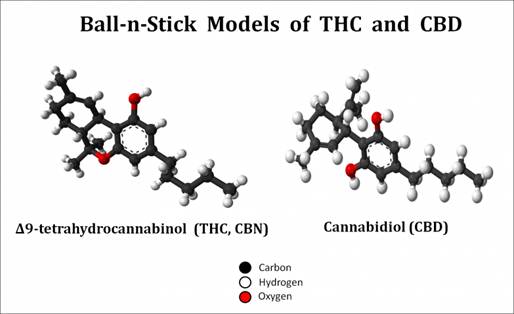
Although not as well researched as THC because of its virtual disappearance from modern strains, CBD has quickly become known as a powerful brain-protective antioxidant. CBD is non-psychoactive, possesses miraculous medicinal properties, and is currently legal in every U.S. state.
One of the most amazing things about Cannabidiol (CBD) and its triumphant return to cannabis medicine, is its ability to eliminate the paranoia, anxiety, rapid heart rate, and even dependency commonly associated with modern (THC-only) strains. “When combined with THC”, explains Michael Backes, “the two compounds synergize and CBD eliminates many of the negative side effects.”
- CBD & Anxiety from Public Speaking – A study conducted in Brazil put to the test CBD’s anti-anxiety properties by making people face their greatest fear – public speaking. In a double-blind, randomized fashion, the study dosed 24 people – half with CBD, and half with a placebo, and the results indicated “Pretreatment with CBD significantly reduced anxiety, cognitive impairment and discomfort in their speech performance,” whereas “The placebo group presented higher anxiety, cognitive impairment, discomfort, and alert levels when compared with the control group.” With CBD, all fear about public speaking was lost, and the people were able to make far superior presentations than they would have been able to make without it.
- Schizophrenia – Some people have warned that cannabis drug use can cause onset of schizophrenia in some people. In order to test this hypothesis, Celia Morgan of University College, London conducted a study which analyzed hair samples from a large population of cannabis users, looking specifically for evidence linking THC to early onset of Schizophrenia. What she found was that only people who had THC in their hair reported pre-psychotic episodes. In those who had THC, as well as CBD in their hair samples, Celia found no reports of pre-psychotic episodes. This exciting evidence suggests that some (maybe even all!) of the short-list of negative effects that people notice from marijuana, may disappear completely when we add CBD (and all the other original cannabinoids) back into the plant.
Despite the fact that it can be difficult to get your hands on CBD at the moment, as interest in cannabis medicine grows over time, acquiring CBD oil is going to become easier. People are already hard at work cultivating strains with increased CBD, as well as all the other cannabinoids missing from modern cannabis. In other words, Cannabis medicine, already a cancer cure, is going to get even better!
The Future of Cannabis Medicine
Scientists and people working to bring back other cannbinoids in strains, as opposed to maximizing THC content, will revive (and perhaps even improve) the quality of medicine once used by all of mankind. Indeed, the future of cannabis medicine is extremely bright, and it represents an incredibly rewarding career path for many people now and in the coming post-legalization era of cannabis.
The future of cannabis medicine requires many people to begin studying the cannabis genome, and to explore the virtually endless synergies involved with various combinations of cannabinoids and terpenes. The best and healthiest years of the human race are ahead of us, and will unfold in proportion to our understanding of how to maximize the use of cannabis for healing and well-being.
Resources Used:
– WakingTimes
– Reset.me
– Patients4MedicalMarijuana
– ChrisBeatCancer
– PubMed
– Alternet
– CE

